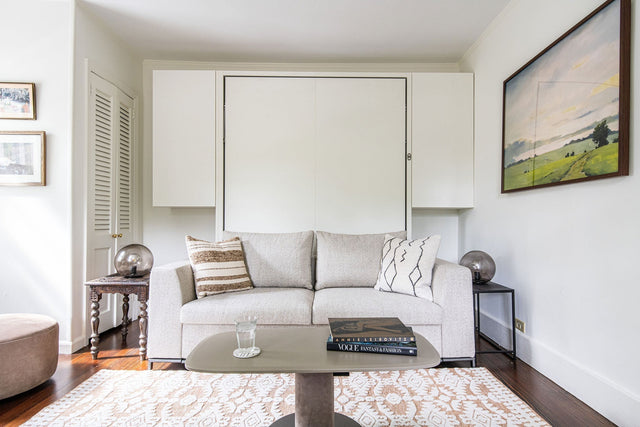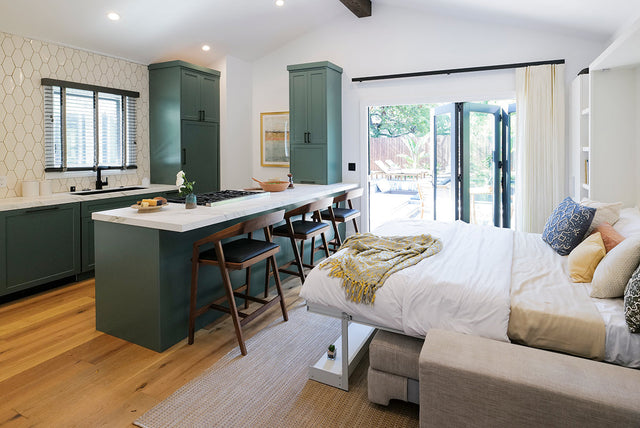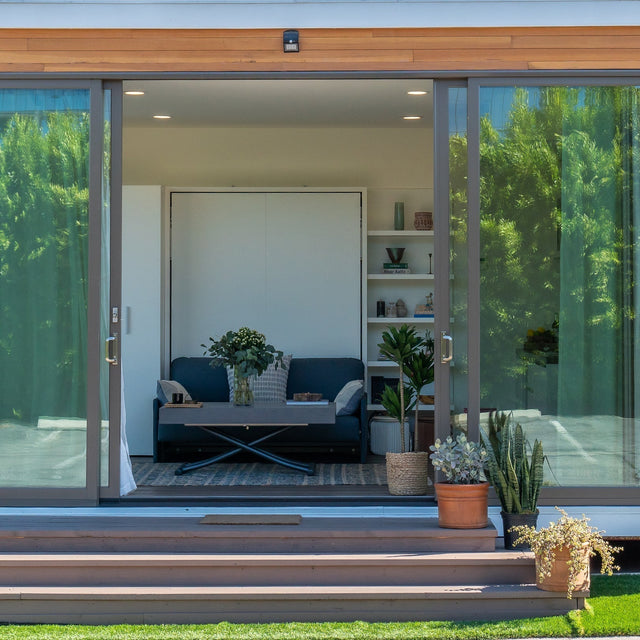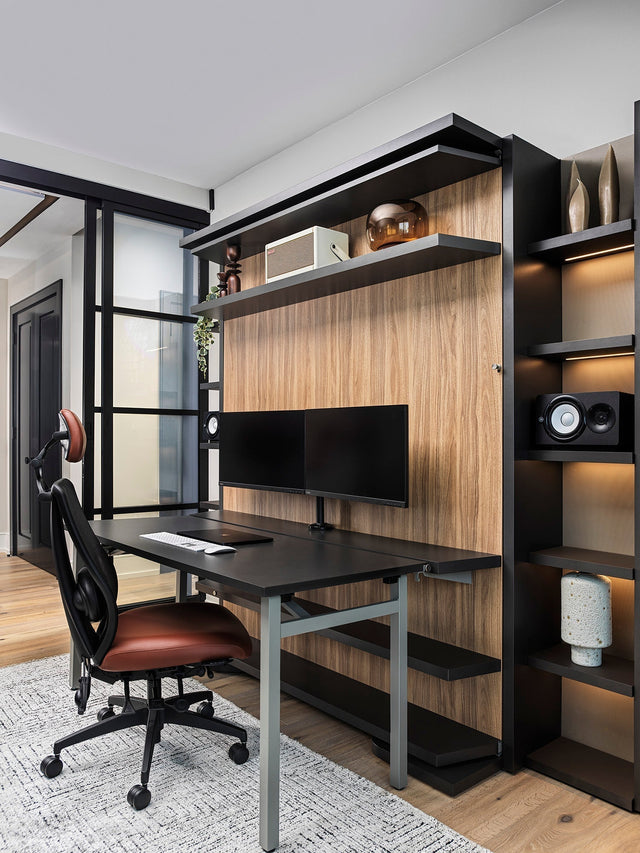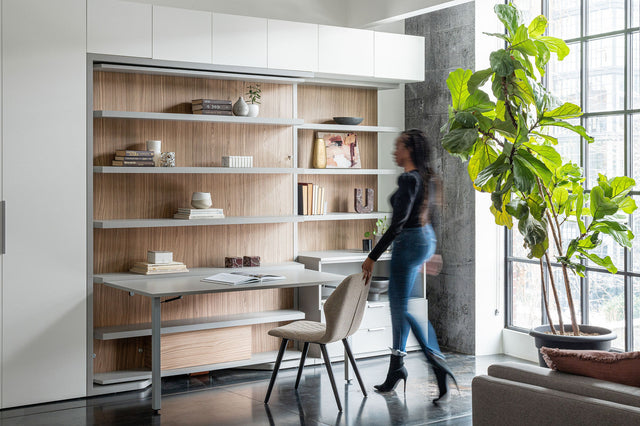How to Find Eco-Friendly & Sustainable Furniture in the Modern World
Interest in sustainable furniture continues to grow as eco-friendly technology becomes a mainstay in our everyday lives.
What Is Green Furniture?
Green furniture companies are sprouting up in response, producing furniture that is sustainable and eco-friendly for the environmentally conscious consumer. This means creating pieces that are meant to last for a long time and not end up in a landfill at the end of its life.
Sustainable furniture is based on the closed-loop cycle of recycling. The goal of sustainable furniture companies is to design furniture that can be used, taken apart and used again — or that can be used throughout a lifetime (or two). Most sustainable furniture companies also focus on reducing the environmental impact of their items, such as using reclaimed materials or non-toxic furniture stains.
The environmental impact, and importance, of buying eco-friendly furniture is often overlooked. Traditional sofas, beds and other furnishings are major polluters of our homes.
Additionally, the EPA suggests that indoor air quality is often 2-5 times more polluted than outdoor air quality. Given that we spend 90% of our time indoors, purchasing furniture that’s good for the environment and our personal health is important. Many people are curious to learn how to find eco-friendly and sustainable furniture, as well as eco-friendly furniture companies.
How to Find Sustainable Furniture
Finding sustainable furniture all begins with research. It’s easy for companies to claim their furniture is green or eco-friendly, but many organizations now certify sustainable furniture materials. Ultimately, to be sustainable, the furniture should be high-quality and made of reasonably sourced materials. If the piece will fall apart and end up in a landfill, it's not sustainable.
Educate yourself about these certifications and what qualifies furniture as sustainable, and you’ll be able to make smart decisions regarding your furniture purchases.
What Are Sustainable Furniture Materials?
Sustainable furniture materials include a variety of resources, from reclaimed wood to LED lights. The type of material, as well as how it was obtained, factor into its sustainable classification. The Forest Stewardship Council (FSC), for example, certifies wood as sustainably harvested. Sustainable, responsible harvests ensure that the natural ecosystem remains in place and is able to maintain itself. As a result, the forest continues to grow and produce wood. Tree farms and forests are examples of areas that qualify for certification.
Recycled and Reclaimed Materials
Some eco-friendly furniture companies use reclaimed or recycled materials, like wood, glass and iron, to create sustainable furniture. Old furniture, homes and other structures often provide the reclaimed items. Companies have even used flawed wood pieces or factory wood scraps for their sustainable furniture. Wood is a popular choice for manufacturers because it’s durable, even if it’s been mishandled throughout the years. Reclaimed pine, for example, is a popular finish for the Cristallo table.
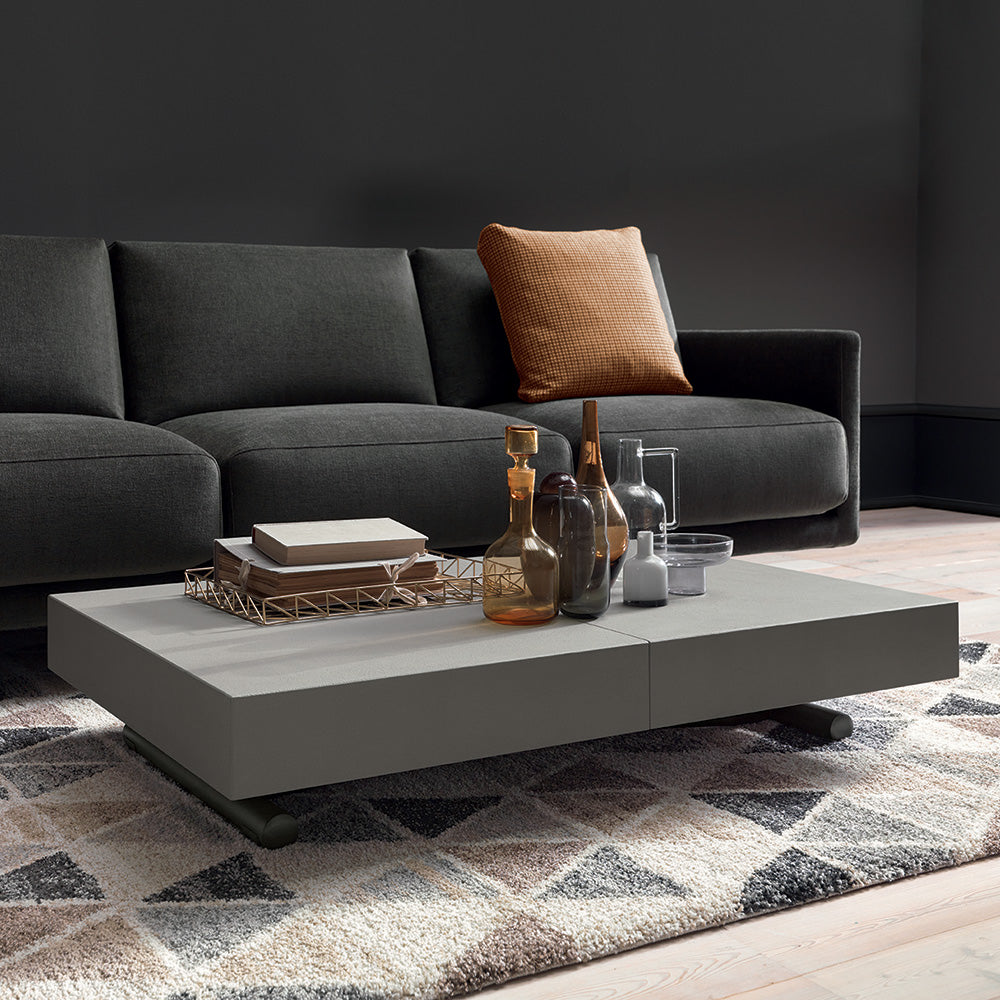
The Rainforest Alliance helps determine if a piece of furniture actually uses reclaimed wood. The non-profit organization provides the Rediscovered Wood Certification to qualifying furniture pieces. Sustainable furniture may also be certified Cradle to Cradle (C2C), which in part says that the furniture can be dismantled. Its individual parts can be recycled at a facility or reused in other furniture. Easy furniture disassembly also allows for quick and easy repairs, which extend the life of the piece.
Furnishings consisting of recyclable materials, like most plastics or metals, help eco-friendly furniture companies by saving them from purchasing additional resources.
Non-Toxic Lacquers
The familiar “new car” smell associated with cars, furniture and other items is a result of manufacturers using unnatural and sometimes toxic substances, like solvent-based lacquers, to treat or finish a product. Solvent-based lacquers contribute to the pollution in your home by emitting, or off-gassing, volatile organic compounds (VOCs), like formaldehyde. Water-based lacquers are a green alternative to finishing wood furniture.
Furniture can be certified by Greenguard or Oeko-Tex for low toxicity rates. Unfinished furniture can also be found, though you’ll still want to varnish it with natural wood finishes to extend its life and protect it from heat, moisture and general wear.
If you’re unsure if a varnish is solvent or water-based, check the label. Most varnishes will note if they have a low VOC, which is what you want.
LED and CFL Lighting
LED lights are common in today’s households, with nearly half of the U.S. utilizing them for indoor lighting because of their sustainability. They’re far more energy efficient and have longer lifetimes than conventional light bulbs. In fact, LED light bulbs last 25 times longer and use 75% less energy than traditional light bulbs.
CFL lightbulbs have also been on the rise for energy efficiency, using electrodes inside of a gas-filled tube. Although LED is still the most environmentally friendly option, CFL bulbs provide an additional alternative to incandescent light.
Longer light bulbs help reduce waste, and if even a single incandescent bulb was replaced with these alternatives in each home in the U.S., we would have saved enough energy to power more than 3 million homes in a single year.
CARB2 Compliant
The California Air Resources Board (CARB) is behind the CARB2 compliance certification. CARB2 applies to hardwood plywood, particleboard and medium-density fiberboard and indicates the material has the most minimal level of formaldehyde. Unsafe formaldehyde in homes can cause sore throats, asthma attacks and other symptoms, which is why it’s important to, again, use water-based lacquers for preserving furniture.
In addition (and just as important), the CARB2 regulations prohibit the release of formaldehyde into the atmosphere during the production of composite wood products and their effect on global warming as well as the above-mentioned health issues.
Third-Party Certifiers have been approved by the State of California to monitor this production and the labeling of the wood products as CARB2 compliant and these labels follow the wood products onto the furniture itself and the shipping documents, packing materials and into the retailers’ possession and onto the final consumer.
Sustainable furniture made from composite wood, which is a mosaic of wood pieces glued together with a resin, will feature a CARB2 sticker if they’re compliant.
Biodegradable Materials
Biodegradable furniture materials include plant products, wood and paper. Biodegradable materials are ideal for furniture that will inevitably wear out, like a mattress. Mattresses typically last five to 10 years and are often retired to landfills. Biodegradable mattresses ease the guilt of throwing out an item, as they’ll decay and give back to the environment. Resource Furniture offers a full line of 100% non-toxic, biodegradable mattresses.
Understanding what qualifies as a sustainable material, as well as what certifications are available, makes it easier when you search for sustainable and eco-friendly furniture companies from which to purchase furniture.
What to Ask and How to Find Sustainable Furniture Companies
Of course, you might be wondering how to find an eco-friendly furniture store. You may not have many local brick-and-mortar options, depending on where you live. Luckily, you’re guaranteed to find sustainable stores and products online.
The Sustainable Furnishings Council (SFC) maintains a database of furniture manufacturers who are geared toward eco-friendly furniture and practices. But, because the SFC doesn’t have strict standards, like requiring sustainable harvesting, some furniture stores listed aren’t 100% sustainable or eco-friendly.
Talk to Showroom Employees
Employees at many eco-friendly furniture stores are knowledgeable and up-to-date on the latest trends in the industry. Talking with employees and asking them questions can help you discover if their company is truly offering sustainable products. Ask them about their company’s sustainable practices, certifications and, most of all, about the furniture. Find out if it’s easy to replace individual pieces, for example, or if the furniture has a non-toxic stain.
Showroom employees should easily know the answers to these questions. If they do not, take that as a sign that the pieces may not be as eco-friendly as you would hope.
Learn About Shipping
Consider researching the company’s shipping practices. Eco-friendly companies focused on sustainable practices often strive to reduce their carbon imprint, which is one reason why sustainable furniture generally is able to be fully disassembled.
When disassembled, the furniture can be flat-packed for shipping. Unlike the transportation of assembled furniture, flat-packed furniture allows carriers to fill their trucks to capacity and prevent additional delivery trips and fuel stops.
Freight carriers, shippers, and their affiliates are also moving to more eco-friendly shipping methods. SmartWay Transport Partnership is a collaboration between the Environmental Protection Agency (EPA) and the transport industry to reduce emissions and boost energy efficiency.
Tactics such as aerodynamic panels, speed limitations and new exhaust systems have helped shippers reduce their emission rate. New technology has also helped by finding more efficient delivery routes.
So far, the partnership has saved the equivalent of powering 21 million homes in fuel, as well as reduced transportation’s air pollution by 143 million metric tons of carbon dioxide.
Nearly 4,000 companies are a part of the SmartWay Transport Partnership. Don’t hesitate to ask an eco-friendly furniture store if they’re involved. It could encourage them to partner and ship with companies that are a part of the effort.
Why Living Small Is Sustainable
Downsizing is a great way to live in a more sustainable way. Smaller living spaces, whether a cozier home or a micro-apartment, use less energy, are easier to heat and have a smaller carbon footprint.
Smaller homes also tend to discourage excessive consumerism that impacts the environment and usually support denser communities that are more transit friendly, reducing total emissions. An EPA study showed that access to public transportation can reduce your carbon footprint by 62%, while living in a single-family suburban house with energy-efficient fuel cuts your footprint by a little less than half this amount.
In the U.S., 42% of a home’s energy use is linked to heating and cooling. Downsizing to a comfortable space will reduce your carbon footprint because smaller homes require less energy for heating and cooling and require fewer resources to build.
A smaller living space is a viable way to minimize your impact on the environment. Many sustainable furniture stores design furniture specifically for smaller locations. Murphy beds, for example, have been stylishly redesigned into transforming sets for twin, queen and bunk beds that incorporate eco-friendly sofas or desks, which allow a single space to function like two spaces or more.

Multi-purpose, space-saving furnishings go beyond eco-friendly bedroom furniture. Space-saving tables, nightstands and closets are also available to support a green lifestyle throughout your home.
Light, compact green furniture makes it easy to transition from a larger home or apartment to a smaller one. It also helps organize your life in whole new ways.
How Sustainable and Eco-Friendly Furniture Impacts Others
Outsourcing is a common topic of discussion when it comes to brand-name companies. It’s public knowledge that many conglomerates outsource their manufacturing and pay their outsourced employees significantly less. More than 300,000 jobs are outsourced from the U.S. each year, with many companies citing decreased costs as their primary incentive.
Similar to asking eco-friendly furniture companies about their shipping, composition and design of their goods, it’s important to look into a company’s production and manufacturing practices and standards. Do they, for example, manufacture their furniture in a country that supports and follows the International Bill of Human Rights standard for equal pay for equal work?
It may seem trivial while you’re browsing the internet to find sustainable furniture, but it relates directly to why you’re looking for eco-friendly and sustainable furniture. You’re thinking about your impact on the world.
Buying from eco-friendly furniture stores that pay all of their employees equally supports that company’s commitment but also contributes to your personal impact on the world and everyone else in it.
Sustainable Furniture Means Quality and Durability Over Low-Cost and Replaceable Options
Eco-friendly, sustainable furniture is designed to last. The goal is to conserve, not to contribute to the local landfill, after all. Sustainable furniture outlasts traditional furniture for a few reasons. First, sustainable furnishings are designed to be fixable. As noted earlier, most sustainable pieces are easy to dismantle. When your nightstand handle or chair leg breaks, it’s a hassle-free fix because the furniture is easy to take apart and repair.
And it makes sense: We don’t throw away our bicycles when they get a flat tire, we replace the tire and continue riding. Furniture qualifies for the same treatment.
Traditional furniture doesn’t receive that treatment, however, which is why nearly 10 million tons of furniture enters the landfill each year and, subsequently, why the furniture industry anticipated consumers to spend more than $125 billion on new furniture in 2022.
While sustainable furnishings can break, like anything else, they’re not necessarily easy to damage. Eco-friendly and sustainable furnishing companies manufacture their products with high-quality, durable materials. Again, the goal is to create a product built to last.
Lifetime or limited warranties demonstrate a company’s commitment to their product. Resource Furniture’s Clei wall beds, for example, include lifetime warranties.
Product sustainability extends beyond a product’s framework to its upholstery. While traditional upholstery may require professional cleaning, sustainable furniture often features upholstery that can be removed and cleaned or replaced.
Sustainable furniture outlasts traditional furniture because eco-friendly furniture stores understand their audience. Well-made furniture is a long-term investment that pays off because it doesn’t have to be replaced again and again. If it did, it wouldn’t be sustainable or eco-friendly.
Why Buying Vintage Furniture Is a Sustainable Option
Vintage furniture doesn’t offer the same benefits as compact, multipurpose furniture, but it is a sustainable option. It can also complement your eco-friendly furniture and recreate what TV character Frasier Crane once described as an eclectic style of decorating.
Unlike present-day furniture, most vintage pieces were produced and manufactured without today’s modern mass-production methods. Purchasing vintage furniture doesn’t contribute to ongoing manufacturing and production methods, such as job outsourcing or deforestation.
Due to its age, most of the toxic chemicals from the furniture will have dissipated, and you won’t have to worry about off-gassing. Locally purchased second-hand furniture also reduces the environmental impact of transporting or shipping a bulky item to your home.
Purchasing older furniture eases a landfill’s load and prevents a quality piece of furniture from being thrown away. Also, vintage furniture has resale value if you choose to sell it later.
Consider Resource Furniture for Environmentally Friendly Furniture
Eco-friendly and flexible furniture is the future. Sustainable, comfortable green furniture contributes to an eco-friendly lifestyle. And it’s a choice that benefits more than the environment. It also benefits the people who design and manufacture the items. Start your own journey with sustainable furniture. Seek out pieces made from the right materials, and ask furniture store staff the right questions about their product’s environmental impact.
If you’re interested in learning more about eco-friendly furniture or Resource Furniture’s high-quality, sustainable transforming sets and materials, feel free to contact us or visit one of our showrooms. Our experienced staff is happy to help you find furniture to meet your individual needs.
Popular posts

Small Master Bedroom Style: The Art of Smart, Multi-Use Space

How to Turn Your Garage Into a Functional, Design-Forward Living Space

What Is a Modular Home? The Future of Flexible, Design-Forward Living

How to Convert a Guest Bedroom into an Office

10 ADU Ideas That Mix Smart Design With Luxury Style


